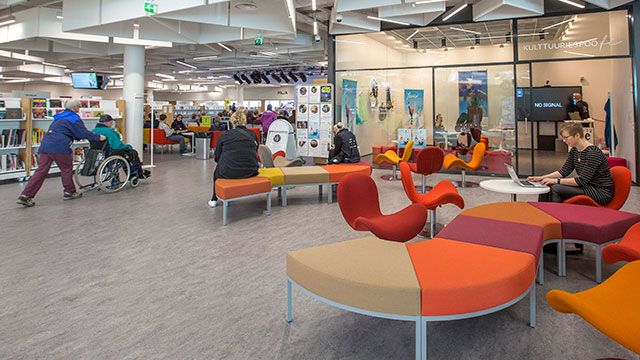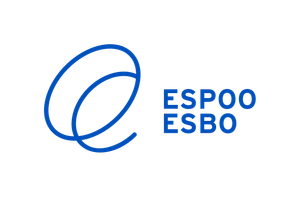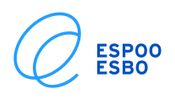Espoo experiment proves that artificial intelligence recognises those who need support

In the experiment that started in summer 2017, the social and health data and early education client relationship data of the entire population of Espoo for the years 2002–2016 were analysed by artificial intelligence. Data was collected on approximately 520,000 people and more than 37 million customer contacts.
Personal data was encrypted as early as the search phase, and all the data processing was done with extreme security. Individual persons could not be identified at any stage.
New information challenges the city
The experts of the City of Espoo were surprised by how extensive the data mass was and how well artificial intelligence could combine data. The experiment enabled, for the first time, the review of customer paths by family; the city’s data systems are usually individual-oriented.
– With the support of new technology, combining the data included in different data systems creates new data that can challenge the city. We have also received important information on the quality of the data and the registration practices, says Data Analyst Consultant Tomas Lehtinen.
Some observations can already be summed up. Artificial intelligence found approximately 280 factors that anticipated a child welfare client relationship. None of these factors alone is a risk, but the simultaneous occurrence of several factors can be a risk.
– The Espoo experiment demonstrates that artificial intelligence and the utilisation of data have a significant role in health care, whether in developing new service paths or supporting health care professionals in their daily work. The experiment also demonstrates that the quickly-implemented Intelligent Wellbeing platform by Tieto develops the data capability of social service and health care organisations, says Matti Ristimäki, Head of Data-Driven Businesses at Tieto.
Preliminary results on child welfare and child psychiatry client relationships
The data could be used to examine, for example, what differences there were in the previous use of services by families regarding which a child welfare report had been filed or that had received a referral to youth psychiatry.
The child welfare report or referral to youth psychiatry was preceded by using health services 3–5 times more than the control group. The family members in this group also used health services more than in the support group.
– The results, however, are very preliminary and they cannot as such be used for making conclusions. We need more research, experimentation and material analysis. The material did not include the use of private health care, and in the future, the data should be combined with the Kela database to specify the result, says Mari Ahlström, Director of Family and Social Services at the City of Espoo.
Development work is only beginning
The artificial intelligence experiment by Espoo and Tieto was unique because public administration client relationship data has never been combined and analysed as extensively using artificial intelligence before. The starting point was to test whether artificial intelligence can help target services proactively. The answer is a strong yes.
The data collected for the experiment and analysed by artificial intelligence has been destroyed.
– We now have a model that allows us to search for the equivalent fresh data whenever necessary. Therefore, the old data was not worth keeping, Tomas Lehtinen says.
Follow-up work will require, among other things, ethical consideration on whether the data produced by artificial intelligence could be used as an alarm so that the system would tell the care personnel whenever a customer arriving at an appointment has many risk factors. This is among the things that Espoo will discuss with experts of the field such as the Finnish Center for Artificial Intelligence (FCAI) founded by Aalto University and the University of Helsinki.
Besides FCAI, interest in artificial intelligence collaboration has been expressed, among others, by the National Institute for Health and Welfare and Kela.
– During the year, we have created a strong foundation for the future of municipal services. There is also a lot of interest within the city, and many ideas are under discussion, Päivi Sutinen, Service Development Director at the City of Espoo, rejoices.
– The data on Finnish health care is of a very high quality, and when it is collected in one place, such as a data pool, it can be better utilised, for example, with artificial intelligence for society, the development of municipal services, health care professionals and individual residents, Matti Ristimäki continues.
The experiment was one of Espoo’s contributions to the 6Aika project, in which the six largest cities in Finland develop services that are more open and intelligent based on the shared 6Aika strategy. Besides developing services, the aim of 6Aika is to create new competence, business and jobs in Finland.
More information
City of Espoo
Tomas Lehtinen, Data Analyst Consultant, +358 43 826 9177, tomas.lehtinen@espoo.fi
Mari Ahlström, Director of Family and Social Services, +358 43 825 6658, mari.ahlstrom@espoo.fi
Tieto
Matti Ristimäki, Head of Data-Driven Businesses
+358 (40) 7487373, matti.ristimaki@tieto.com
Tieto
Tieto utilises the opportunities of a data-driven world to produce value for individuals, organisations and the society. Our aim is to be the best partner for our customers in the reform of their business. In addition to our software and service competence, we strongly utilise the opportunities of innovation and ecosystems together with our customers.
www.tieto.fi
Keywords
Images

Links
About Espoon kaupunki - Esbo stad
 Espoon kaupunki - Esbo stad
Espoon kaupunki - Esbo stadPL 1 / PB 1
02070 ESPOON KAUPUNKI / ESBO STAD
+358 9 816 21http://www.espoo.fi
Subscribe to releases from Espoon kaupunki - Esbo stad
Subscribe to all the latest releases from Espoon kaupunki - Esbo stad by registering your e-mail address below. You can unsubscribe at any time.
Latest releases from Espoon kaupunki - Esbo stad
Espoon vuoden 2026 talousarviosta neuvottelutulos19.11.2025 13:00:58 EET | Tiedote
Valtuuston neuvottelutoimikunta on saavuttanut neuvottelutuloksen Espoon kaupungin vuoden 2026 talousarviosta ja taloussuunnitelmasta. Neuvotteluissa lisäpanostuksia kohdistettiin erityisesti lapsiin ja nuoriin.
Espoo järjestää Katse Espooseen -runokilpailun senioreille17.11.2025 09:30:00 EET | Tiedote
Espoon kaupunki järjestää runokilpailun, johon kutsutaan mukaan kaikki 65 vuotta täyttäneet kirjoittajat. Osallistujan ei tarvitse olla espoolainen. Runokilpailu on osa Katse Espooseen -kokonaisuutta, johon kuuluu kirjan, mediataideteoksen ja podcastin lisäksi biisipajoja senioritaloissa sekä Sukupolvet yhdessä -toimintaa asukaspuistoissa.
Lukemaan innostavan Kirjaherkkukisan voitto Jupperin ja Nöykkiönlaakson kouluille14.11.2025 15:49:10 EET | Tiedote
Espoon koulujen välinen kilpailu innostaa 5.–6.-luokkalaiset lukemaan ja testaa koululaisten kirjallisuus- ja kirjastotaitoja.
Uusi mikroliikennelupa otetaan käyttöön14.11.2025 06:57:10 EET | Tiedote
Espoon kaupungin Tekninen lautakunta päättää uuden mikroliikenneluvan käyttöönotosta 19.11.2025. Kesällä 2025 tehty lakimuutos vaatii, että kaupungit luvittavat alueellaan toimivat mikroliikennepalveluita tarjoavat yritykset viimeistään vuoden 2026 alusta alkaen.
Esbo stads traditionella självständighetsfest för sjätteklassare ordnas den 28 november13.11.2025 13:10:21 EET | Pressmeddelande
Sjätteklassarnas självständighetsfest ordnas även i år enligt tradition. I år samlas sjätteklassarna för att fira tillsammans fredagen den 28.11.2025 på Opinmäki campus.
In our pressroom you can read all our latest releases, find our press contacts, images, documents and other relevant information about us.
Visit our pressroom